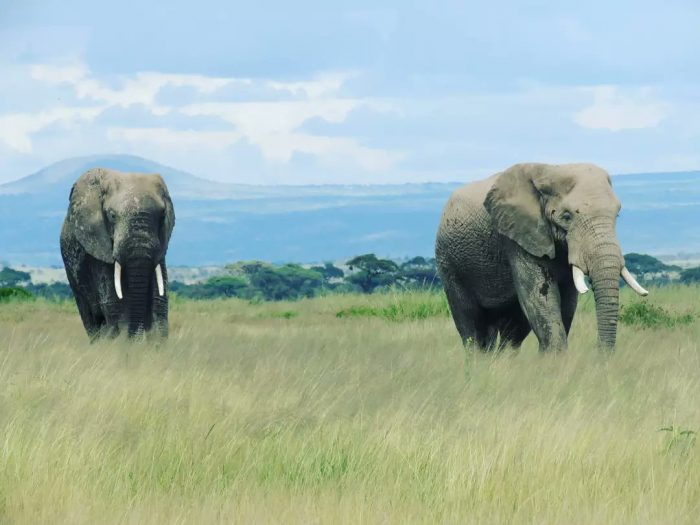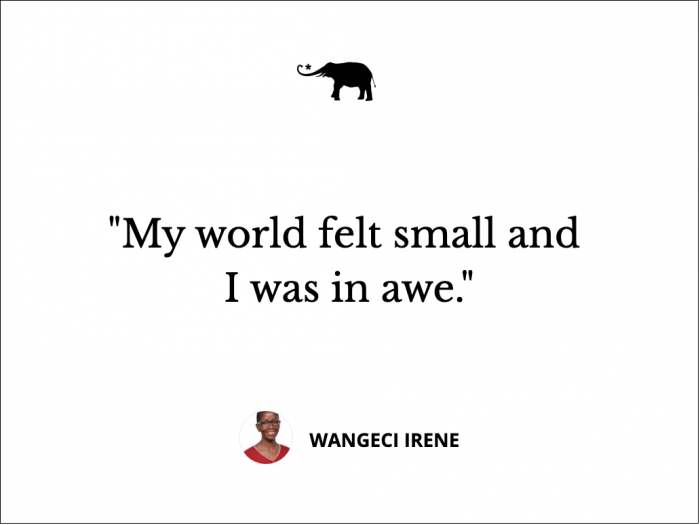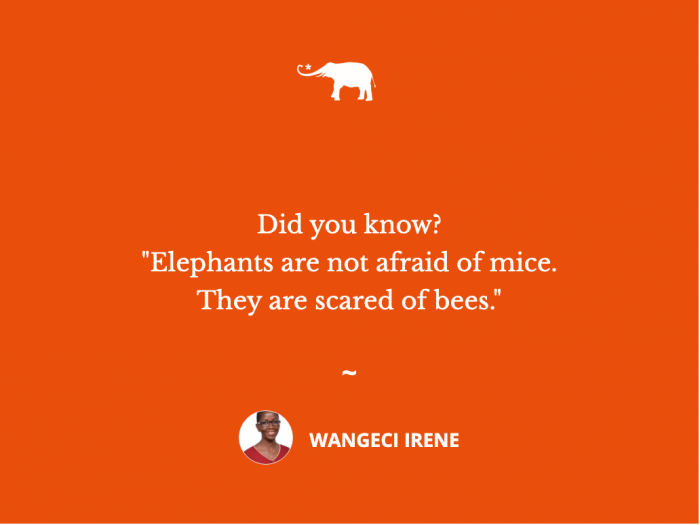It was at the end of my stay with a family when one of their kin drove in, with a white tour van.
When it was time for her to leave, it was requested that she take me home. She had dropped some tourists at a game reserve and was on her way home, she explained.
As we drove off, she received a call that told me all was not well. Amidst their conversation, she mentioned that she had to go back and pick the guests on his behalf. We took a U-turn to a place I had no knowledge of.
It was a long journey. We arrived at the late hours of the night.
We shared a tiny tent that hardly fit two sleeping bags. Morning came and it felt like a warm day was ahead of us. When I peeped through the tent using a small torch, we were surrounded by a vast land of bushes.
I felt a sense of fear and asked, “Aunt, where are we?” She answered, “We are at Maasai Mara National Reserve.”
Almost immediately, she abruptly informed me to quickly get ready as we were going for an early morning game drive. The mention of this was music to my ears; I had never seen wild animals. I was young and in school.
For a while, I dwelled in the excitement of the moment. This was going to be the best unplanned adventure in a country where there are over 50 parks and reserves.
What a privilege!
It was at the crack of dawn and the morning dew was still fresh. I thought it was too early for a game drive. Unexpectedly, she responded that it was the best time as some animals went into hiding during daylight.
“Do people take showers when in the bush?”
I was pointed to a makeshift bathroom that was a few metres from the tent. Off to the showers with a linen around my physique, soap, and towel in my hands. It was a short bath. The fear of encountering an animal was too terrifying and the water was as cold as ice.
In this exciting whirlwind, hunger was forgotten. I did not ask about breakfast.
Armed with my small backpack, I followed her to the tour van. She showed me a seat next to her.
What an adventure!
The anticipation of seeing wild animals in their natural habitat was more than I could handle. I hardly kept calm. In a few minutes, the tourists were onboard and the drive began.
This would be my first encounter with an elephant.
The game drive was beholding as with each passing minute different animals were in view.
She mentioned each animal by name and said something about each. Her explanations would pass me as I was too bewildered seeing the different animals. I recall seeing lions, cheetahs, leopards, jackals, wildebeests, giraffes, gazelles, buffalos, and waterbuck.
The van suddenly stopped. There was pin-drop silence in the van.
A magnificent elephant stood in front of us. It was huge—beyond what I had perceived an elephant would be like.
My world felt small and I was in awe.
The elephant’s eyes were small with a bush of eyelids. Its skin looked rough and the wrinkled trunk was gracefully hanging in the middle of its face as the big ears flapped.
Our tour guide softly explained that it was time to take photos but quietly.
That was like pressing a start button, cameras rolled and silence was observed. I still do not understand how many shots are sufficient as the tourists seemed not to stop for a long while.
As this went on, I was in this space where I was shocked at the size of this majestic animal. The tour guide informed us it was the largest living animal in the world.
I share this story in honor of August 12, World Elephant Day.
What is World Elephant Day?
World Elephant Day is an annual celebration that brings the world together to help elephants.
It was first celebrated on August 12, 2012, and was founded by a Canadian named Patricia Sims and the Elephant Reintroduction Foundation of Thailand to protect elephants from the threats that they face.
There are two distinct types of elephants: the African elephant which has two species—Savanna and Forest Elephants—and the Asian elephant. Some of the general differences between the African and the Asian Elephant are:
The Asian species are smaller than the African in size and weight with smaller ears compared to the fan-shaped of the African species. Some males of the Asian species have tusks while females may have rudimentary tusks. However, for the African species, both males and females grow tusk and the head is fuller and more rounded with a single dome shape. Asian species are twin-domed.
The trunk of the African species has more visible rings than that of the Asian species and the lower lip shape of the Asian species is tampered and long. African species’ lower lips are short and round.
The skin texture of the African species is more wrinkled. Asian species are smoother.
Here are eight reasons why we need to care for, protect, and preserve wild elephants:
1. Elephants are among the keystone species for the environment.
2. They help the maintenance of the forest and savanna ecosystem.
3. They contribute to the soil being healthy and nutrients rich.
4. Elephants excavate mini waterholes for themselves and other animals.
5. The poaching for the illegal ivory trade is escalating.
6. Their habitat and migratory routes are shrinking due to encroachment by human settlement and the construction of infrastructures.
7. Crops being raided by elephants cause injuries or even deaths to both humans and elephants.
8. Elephants in captivity are mistreated. Elephants belong to the wild, being in captivity denies them everything that gives their life meaning.
How can we celebrate World Elephant Day?
>> Express your concern on issues affecting elephants.
>> Share your knowledge/awareness.
>> Support solutions for the better care of captive and wild elephants.
>> Donate to foundations and conservations that have activities toward caring for, protecting, and conserving elephants.
And what can we do for elephants?
>> Work on better protection for wild elephants
>> Enforcement policies that prevent poaching and ivory trade
>> Conserve elephant habitats and migratory routes.
>> Treat those elephants that are not in the wild with more love and care and as soon as is possible/appropriate, reintroduce them to their natural habitat.
>> Protect sanctuaries where they are kept.
Elephants are at risk of being extinct, the numbers have dropped by 62 percent in the last decade, and the two main causes are poaching and human-elephant conflict.
Elephant rescue and rehabilitation programs exist to take care of orphaned baby elephants because, if left in the wild alone, they are vulnerable and may be killed by other animals. They help those that have been injured and left behind by the herd or left behind during immigration as elephants are nomadic creatures.
What did I find out about elephants that day as a child?
The elephant is the national animal of Thailand.
They are sensitive and caring animals.
They are intelligent; they never forget.
They are the largest land-living animal.
They are good swimmers.
They see themselves in the mirror.
Their gestation is 22 months.
They love to live in herds led by a female elephant.
They use mud baths to protect their skin.
Elephants are not afraid of mice.
They are scared of bees.
They communicate through trumpet calls, vibrations, and touch.
The tusks keep growing as the elephant grows.
And their life span if not sick or poached is between 50-70 years.
What do you know about elephants? Add to the list via the comments. I am curious to learn from you too.
#WorldElephantDay











Read 27 comments and reply